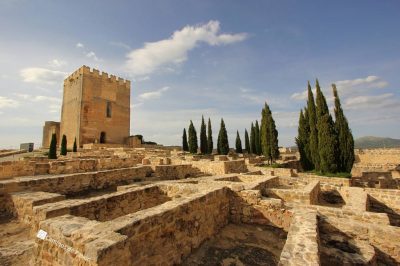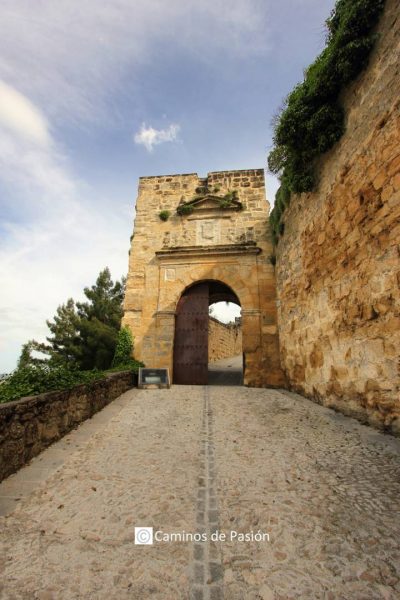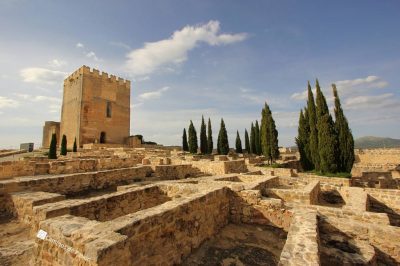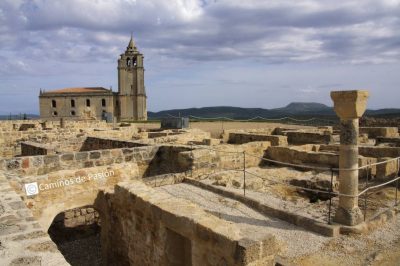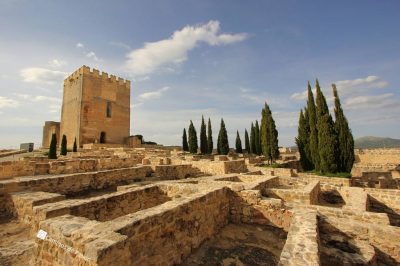Alcalá la Real was an important strategic enclave since pre-historic times. The cerro de la Mota hill served as an area that controlled who or what entered the city, and became a privileged place to settle.
The Fortaleza de la Mota monumental complex is strategically set on the peak of this hill, at 1033 metres altitude. These characteristics, its shape and location, lend it a predominant view, a perfect natural watchtower, that dominated several kilometres of the surrounding countryside.
The Islamic conquest and initiating the castellation of the hillside, brought the continued development of the walled complex and its urban fabric. The second Lord of the Kingdom of Granada, “Aben-abus Ben-Zeiri”, ordered the construction of the La Mota castle, in around the year 1000. The Moors built a city with a layout that followed the same models as the Caliphal and Almohad eras. There would have been buildings such as the military alcazaba citadel or the mosque, of which remains can no longer be identified.
However, despite the clear Al-Andalus hallmark, the fortress is today the main product of the architectural reforms that the Christians carried out after their reconquest in 1341 with Alfonso XI.
The old walled city or fortress also had religious, administrative and governmental buildings, as well as shopping centres. Civil and ecclesiastic authorities resided within it.
Following the conquest of Granada, there was no longer the need to protect the population and the urban nucleus gradually spread towards the plains, causing the walled enclosure to become abandoned. Until the 18th century, the La Mota’s most representative buildings continued to be located inside the fortified enclosure. The Palacio Abacial, Abbey Palace, is a highlight; during that century it underwent significant rebuilding, and is now the museum’s headquarters.
One of the most significant buildings is the Alcazaba, found at the highest part of the enclosure. It comprises three towers linked by walls that house the Patio de Armas (military enclosure): the 20-m tall keep (torre del Homenaje), the watchtower (torre de la Vela or Campana) used to surveil the surrounding lands in communication with the network of watchtowers in the area, and La Mocha tower, which had an excellent view of the town.
The Santa María la Mayor Abbey Church is also important. It was originally a Gothic church, which later took on Renaissance form. It was set on fire by Napoleonic troops during their occupation between 1810-1812.
The Castle or Fortaleza de la Mota was declared a National Monument in 1913.
Address
Address:
cerro de la mota, alcalar la real
GPS:
37, -3.9298652767212
Telephone:
Web:
Features
Languages:
Spanish, english and french
Price:
6€







